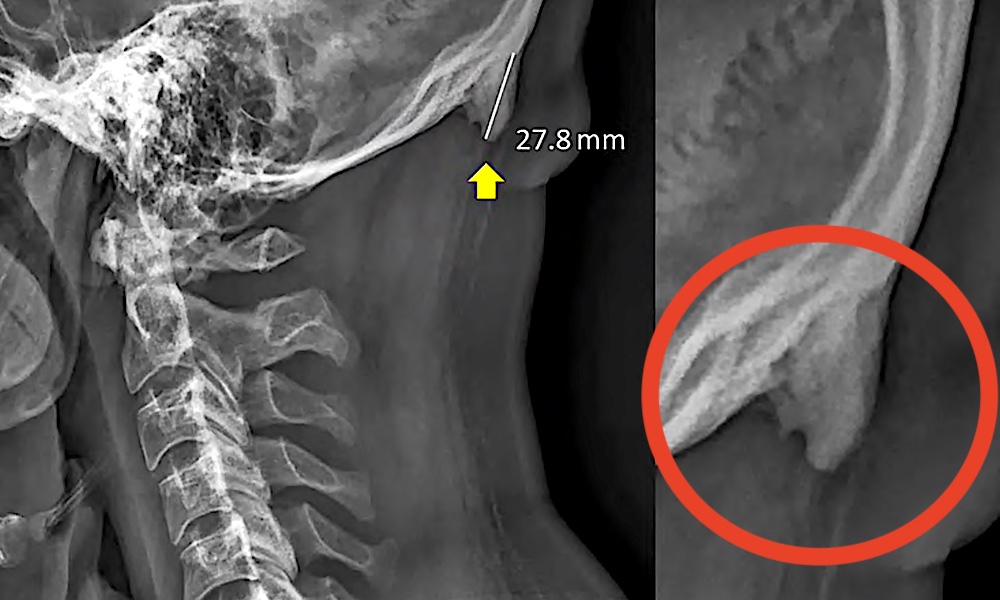No, Using a Smartphone Won’t Cause You to Grow Horns on Your Head
 Credit: Scientific Reports via NBC News
Credit: Scientific Reports via NBC News
Toggle Dark Mode
Are people growing “horns” or “spikes” on the back of their heads because they use smartphones too much? Probably not. But you may think otherwise if you’ve read any one of a handful of news stories in major publications citing a study that seemingly links excessive smartphone use to the growth of “horns.”
Here’s What’s Actually Going on
These news outlets are actually citing a series of studies published by David Shahar and Mark Sayers, a pair of researchers at the University of the Sunshine Coast in Australia.
The researchers have been studying bony projections that appear to grow from the base of the skull in some people. More technically, it’s an abnormally large external occipital protuberance — which is a
But because of the abstract in one of those studies, a handful of news outlets picked up the story — first in Australia, then across the rest of the globe.
The Problems
As Gizmodo, The New York Times, and others point out, there are a series of problems with the studies and the resulting coverage.
For one, the aforementioned abstract doesn’t contain any conclusions — only a hypothesis. The researchers hypothesize that the abnormal bony growths “may be linked to sustained aberrant postures associated with the emergency and extensive use of hand-held contemporary technologies, such as smartphones and tablets.”
That’s a hypothesis. Gizmodo notes that it’s not a proven hypothesis.
In fact, the actual findings of the studies are much less sensational. The researchers found that these projections appear to be larger and more common in younger people, and that males tended to have larger bone growths, among other findings. (Though there’s some iffiness in these findings, too.)
But the researchers never compared the participants in their studies to a control group. Similarly, the NYT points out that the data is sourced from people who visited chiropractors — in other words, those who were already in some sort of pain and were seeking medical attention.
In other words, the studies never linked the growths to smartphone use — they only suggested that it may be the case. And while it’s an interesting hypothesis, you definitely shouldn’t panic until it’s actually one backed up by sound science.






